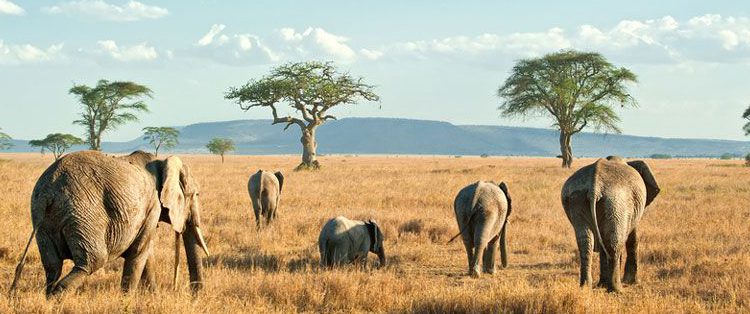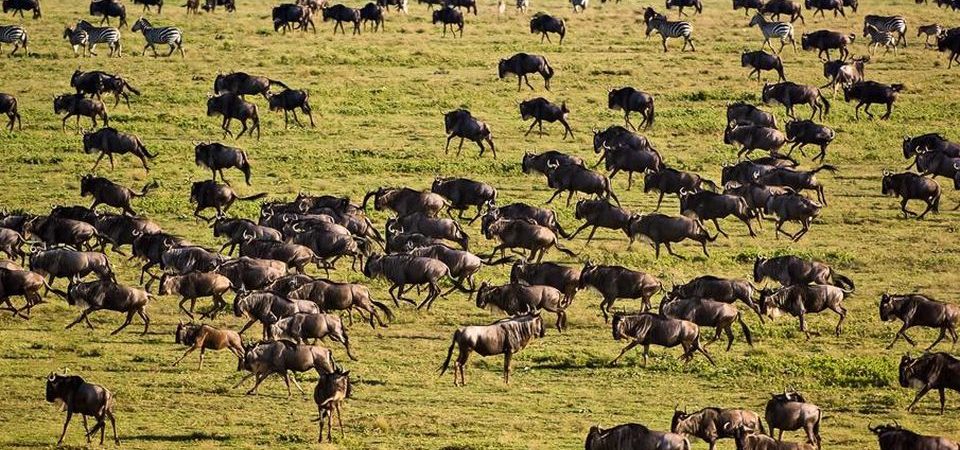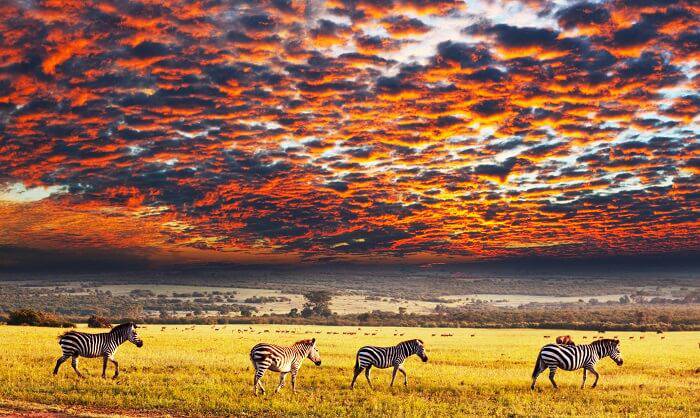TOP TEN SERENGETI NATIONAL PARK FACTS
Top ten Serengeti National Park Facts : The Serengeti is one of Africa’s most well-known parks, known for its wildlife and traditional African beauty. It is the oldest park in Tanzania and a UNESCO World Heritage Site. It is well-known for hosting the world’s largest yearly animal migration, with over 1.5 million wildebeest and 250,000 zebra, as well as offering year-round top-notch wildlife viewing. Serengeti National Park is home to around 2 million ungulates, 4000 lions, 1000 leopards, 550 cheetahs, and 500 bird species.

The Serengeti National Park lies in Tanzania’s north-central region. It is located northwest of the bordering Ngorongoro Conservation Area and partly next to the Kenyan border. The park, which covers 5,700 square miles, was established in 1951. (14,763 square km).
CLIMATE AND WEATHER IN SERENGETI
When planning a vacation to any area, most travelers examine the weather and environment, as weather is a crucial factor that can make a trip or safari fun or monotonous. The Serengeti is a large habitat with various seasonal variations in weather and climate; the dry season begins in late June and lasts until September. The rainy season lasts from November to May.
THE BEST TIME TO GO TO SERENGETI
The Serengeti National Park is open all year, but the dry season (late June to September) offers the best wildlife viewing in general, and the magnificent wildebeest migration tramples the plains. Visit in late January or February to observe predators in action when wildebeest give birth in the Ndutu area.

TOURISM IN SERENGETI NATIONAL PARK
For anyone planning a journey to Africa, the Serengeti National Park in Tanzania is where you can get and experience wildlife in a tremendous way since the park is heaven of wild animals .It’s one of the park that attracts many visitors in Tanzania and all Africa in general of which Almost above 100,000 visitors from around the world visit the park each year. Tourist revenues are critical for wildlife conservation, community development in the park’s proximity, research, and other park programs.
The Serengeti National Park’s key attractions include greater wildlife migration, the Big Five, and physical characteristics such as kopjes and the park’s unending plain. Among the most popular tourist activities in the park are day and night game drives, balloon safaris over the infinite plains, walking safaris, following the great migration, birding, visiting the Serengeti Visitor Center, visiting the Bologonja Springs, visiting the Olduvai Gorge, exploring the Masai Cultural Villages, and exploring the Kopjes.
TOP TEN SERENGETI NATIONAL PARK FACTS
- The Serengeti National Park’s eco-system is the oldest on the planet. Since its inception, it has been an ecologically significant ecosystem. It has unique flora and wildlife that can’t be found anywhere else on the planet.
- Because of the number of prey species, the Serengeti has the world’s greatest lion population. This ecosystem is home to about 3,000 lions. They are proud of themselves and their dominance of the biosphere.
- Serengeti gets its name from the Maasai term siringet, which means “endless plains.” Given the ecosystem’s size of 12,000 square miles, this is an accurate representation (30,000 square kilometers).
- The Serengeti hosts the world’s largest animal migration, known as the “Great Migration.” More than 1.7 million wildebeest, 500,000 zebra, and 200,000 antelope migrate from the southern Serengeti’s Ndutu region northward through the “endless plains” to Kenya’s Masai Mara (a distance of 500 miles/800 kilometers).
- The Ol Doinyo Lengai, the only active volcano in the area, is also found in the Serengeti. It ejects mineral-rich carbonate lava, which is washed down to the Serengeti plains and fertilizes the soil.

serengeti plains - The Serengeti hosts the world’s largest animal migration, known as the “Great Migration.” More than 1.7 million wildebeest, 500,000 zebra, and 200,000 antelope migrate from the southern Serengeti’s Ndutu region northward through the “endless plains” to Kenya’s Masai Mara (a distance of 500 miles/800 kilometers).
- Except for tigers, the Serengeti National Park is an excellent spot to see all of the big cats. Here you can easily see lions, cheetahs, and leopards. To survive they always hunt wild animals.
- In 2013, the Serengeti’s Great Migration was named one of Africa’s Seven Natural Wonders. The Red Sea reef system, Mount Kilimanjaro, the Sahara Desert, the Ngorongoro Crater, the Nile River, and the Okavango Delta are the others.
- Because of the open grass plains where grazing animals congregate, predators are plentiful and easily visible all year, though the best time to see them is during migration, from June to October, or during January and February, when calving occurs at Ndutu.
- Kopjes are geologic wonders made up of exposed gneiss and granite that have been formed by wind and temperature changes in the Serengeti’s south-central region. Kopjes are a favored resting area for lions because they have sun-warmed rocks, vegetation for shade, and are elevated several meters above the plains.


